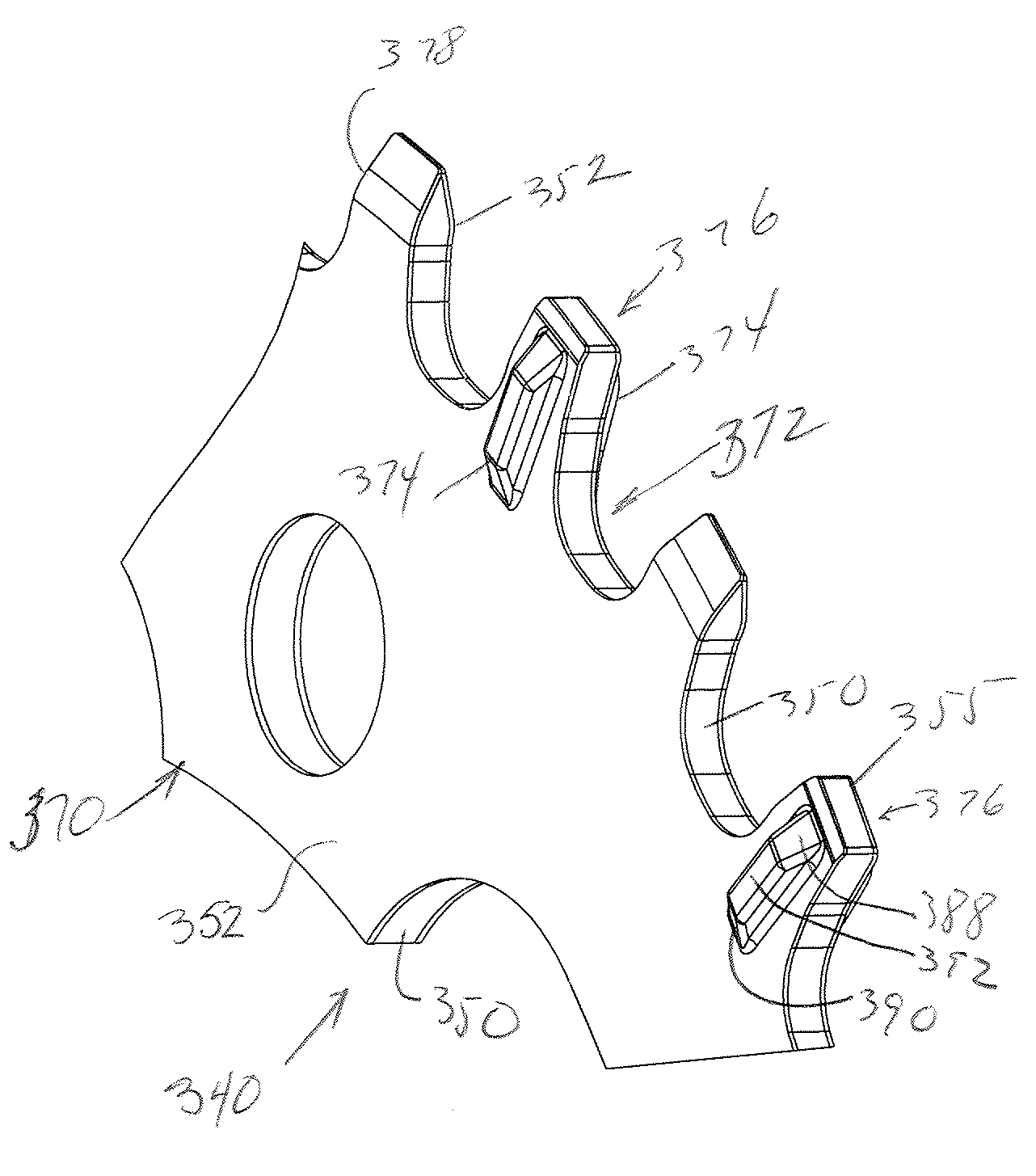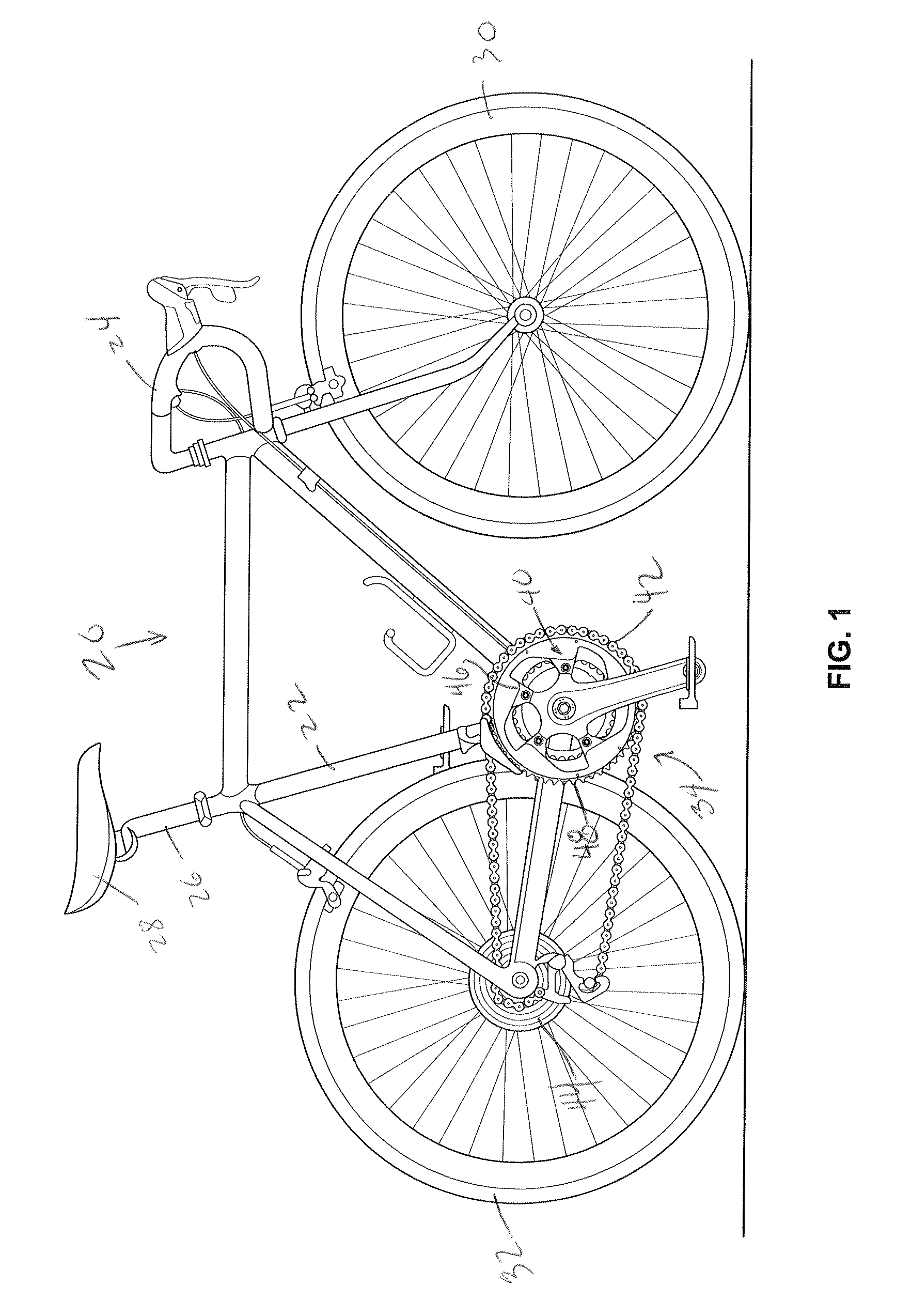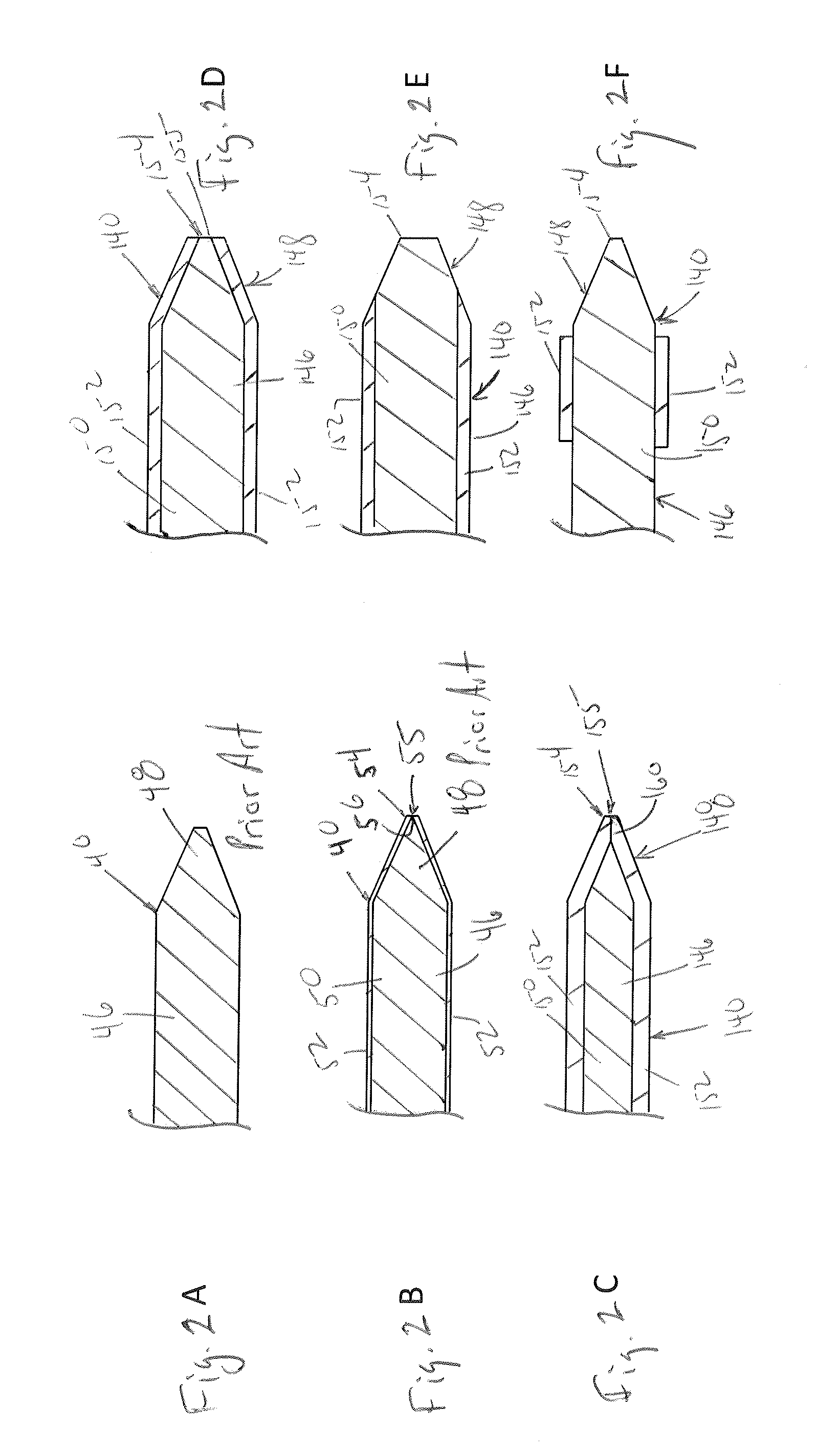Clad chainring
a chainring and cladding technology, applied in the field of chainrings, can solve the problems of not having a significant improvement in wear performance, the material added to the chainring is very thin, and the rings have not enjoyed commercial success, and achieve the effects of cost-effectiveness, cost-effectiveness, and easy stamping
- Summary
- Abstract
- Description
- Claims
- Application Information
AI Technical Summary
Benefits of technology
Problems solved by technology
Method used
Image
Examples
Embodiment Construction
[0031]Embodiments of the invention will herein be described with reference to the drawings. It will be understood that the drawings and descriptions set out herein are provided for illustration only and do not limit the invention as defined by the claims appended hereto and any and all their equivalents. For example, the terms “first” and “second,”“front” and “rear,” or “left” and “right” are used as references and not as limitations. Moreover, the terms refer to bicycle mechanisms conventionally mounted to a bicycle and with the bicycle oriented and used in a standard fashion unless otherwise indicated.
[0032]FIG. 1 is a standard bicycle 20 of standard construction. A frame 22 supports a handlebar 24 at a front end thereof and a seat post 26 and seat 28 at an upper part thereof. The frame 22 also rotatably carries two wheels: a front wheel 30 at a front of the bicycle 20 and a rear wheel 32 at a rear thereof. A drive train 34 drivingly connects pedals 36 to the rear wheel 32. The dr...
PUM
 Login to View More
Login to View More Abstract
Description
Claims
Application Information
 Login to View More
Login to View More - R&D
- Intellectual Property
- Life Sciences
- Materials
- Tech Scout
- Unparalleled Data Quality
- Higher Quality Content
- 60% Fewer Hallucinations
Browse by: Latest US Patents, China's latest patents, Technical Efficacy Thesaurus, Application Domain, Technology Topic, Popular Technical Reports.
© 2025 PatSnap. All rights reserved.Legal|Privacy policy|Modern Slavery Act Transparency Statement|Sitemap|About US| Contact US: help@patsnap.com



